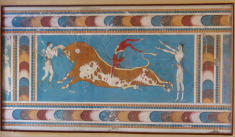Speaker
Description
Entanglement measures proved to be a vital tool for
development of quantum information science. For example, an important
property of entanglement called monogamy is quantitative, and therefore
cannot be captured without introducing entanglement measures.
Additionally, entanglement measures provide useful bounds on several
important hardly computable quantities, and they are indispensable in
proofs of some quantum-information no-go theorems. In experiment,
entanglement measures are needed to assess the quality of prepared
entangled states and entangling gates, and they set bounds one has to
surpass to demonstrate some crucial quantum protocols such as
entanglement distillation.
A common feature of a vast majority of currently used entanglement
measures is that either they possess a good physical meaning or are
computable but not both. We probe the gap between computable and
physically meaningful entanglement measures by introducing a new
quantifier of entanglement which we call intrinsic entanglement
(IE) [1,2]. The proposed quantity is a modification of the so called
classical measure of entanglement [3], which is obtained by maximin
optimization of intrinsic information [4] giving an upper bound on the
secret-key rate in the classical secret key agreement protocol [5].
We investigate the IE within the framework of an important class
of Gaussian states, operations, and measurements. We show, that in
the Gaussian scenario IE simplifies to the mutual information of a
Gaussian distribution of outcomes of measurements on parts of the system,
conditioned on the outcomes of a measurement on a purifying subsystem,
which is first minimized with respect to measurements on the purifying
part and subsequently maximized over the remaining measurements. It is
further demonstrated that the Gaussian intrinsic entanglement
(GIE) vanishes only on separable states and it exhibits monotonicity under
Gaussian local trace-preserving operations and classical communication.
Finally, in the case of two-mode states we compute GIE for all pure states,
all symmetric states with a three-mode purification, asymmetric squeezed
thermal states with a three-mode purification and restricted local noises, as
well as for symmetric squeezed thermal states with a four-mode purification
and restricted local noises. Surprisingly, in all of these cases, GIE is
equal to Gaussian Rényi-2 entanglement [6], which leads us to a conjecture
that the two quantities are equal on all Gaussian states. As GIE is
operationally associated to the secret-key agreement protocol and can
be computed for several important classes of states, it offers a compromise
between computable and physically meaningful entanglement quantifiers.
References:
[1] L. Mišta, Jr. and R. Tatham, Gaussian Intrinsic Entanglement, Phys.
Rev. Lett. 117, 240505 (2016).
[2] L. Mišta, Jr. and R. Tatham, Gaussian intrinsic entanglement: An
entanglement quantifier based on secret correlations, Phys. Rev. A 91,
062313 (2015).
[3] N. Gisin and S. Wolf, Linking Classical and Quantum Key Agreement:
Is There "Bound Information"?, in Proceedings of CRYPTO 2000, Lecture
Notes in Computer Science 1880 (Springer, Berlin, 2000) p. 482.
[4] U. M. Maurer and S. Wolf, Unconditionally secure key agreement and
the intrinsic conditional information, IEEE Trans. Inf. Theor. 45, 499
(1999).
[5] U. M. Maurer, Secret Key Agreement by Public Discussion from Common
Information, IEEE Trans. Inf. Theor. 39, 733 (1993).
[6] G. Adesso, D. Girolami, and A. Serafini, Measuring Gaussian Quantum
Information and Correlations Using the Rényi Entropy of Order 2, Phys.
Rev. Lett. 109, 190502 (2012).
| Topic: | Mini-workshop: Continuous Variables and Relativistic Quantum Information |
|---|
